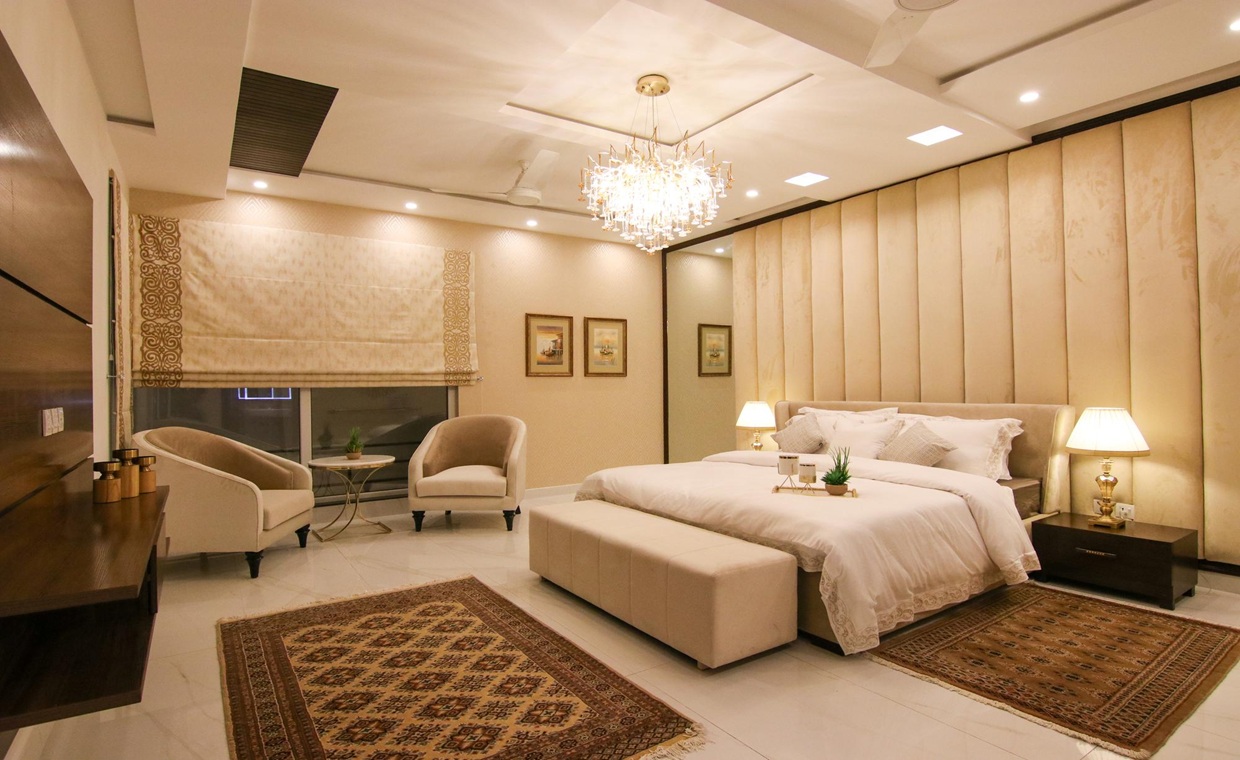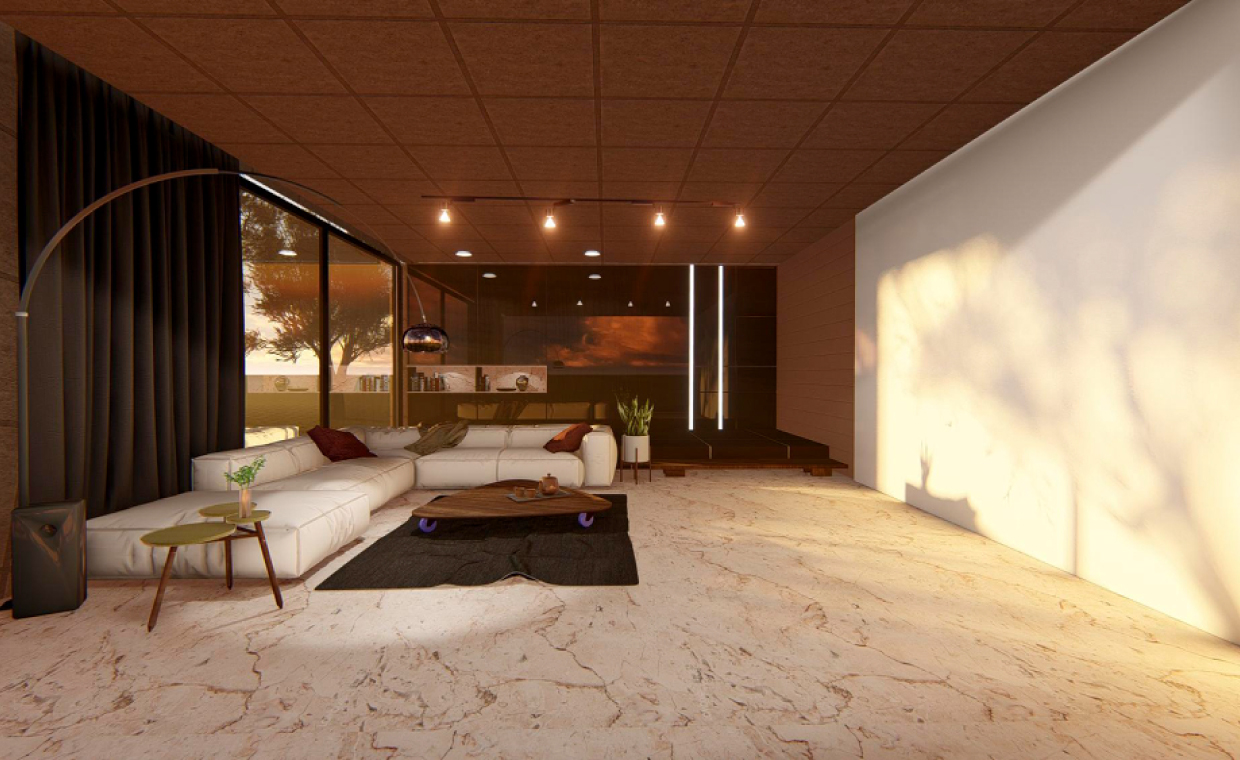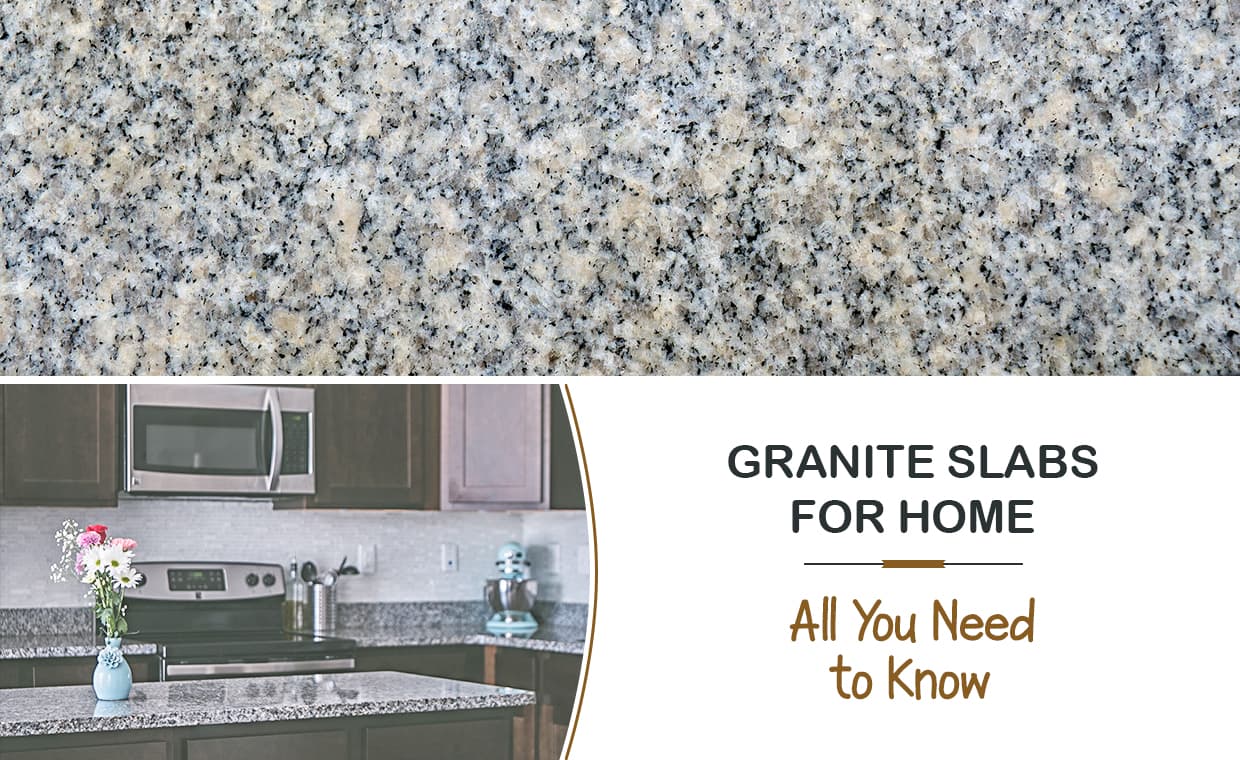
Granite, consisting mainly of quartz, orthoclase or microcline, and mica, is a common, coarse-grained, hard igneous rock. Since ancient times, granite has been used as a construction material. It is one of the oldest and most robust building materials available. The buildings built using this material are said to be long lasting.
Granite has made its way into luxurious homes and commercial setups because of its timeless beauty, elegance and performance. Instead of the above thing, you may be wondering, what is granite slab? Just stay here and continue to read. Here Gharpedia is going to discuss everything you need to know about slab of granite.
What is Granite Slab?

Granite is a unique jewel created by the unpredictable forces of nature, which turn ordinary rock into a piece of beauty. Slab of granite is broad and thick and larger than a tile. They are made from granite blocks that are quarried and then shipped to manufacturers. These blocks are carefully cut into flat levelled sheets or slices. It is durable and environmentally safe material, widely used in the construction industry. No pollutants of any nature are emitted during the manufacturing of granite slabs. They have a long life, often lasting for centuries.
Where Can We Use Granite Slabs?
Granite slabs come in varieties of colours and patterns. The characteristics and performance of granite can vary by the colour of the stone. Being natural, granite slabs do not carry uniform patterns or shapes. They are available in variety of shapes, i.e. square, oval, rectangular, pentagon, and circular. Similarly, there are various colors available in these slabs like white, black, grey, green, brown, and red.
According to ‘F. Pacheco-Torgal, S. Jalali & A. Fucic ed.’[378] (Author of Book – Toxicity of Building Materials), granite tiles of 20 to 50 mm thickness are commonly used as covering and construction materials for counters, shelves, cashier desks tables and benches.
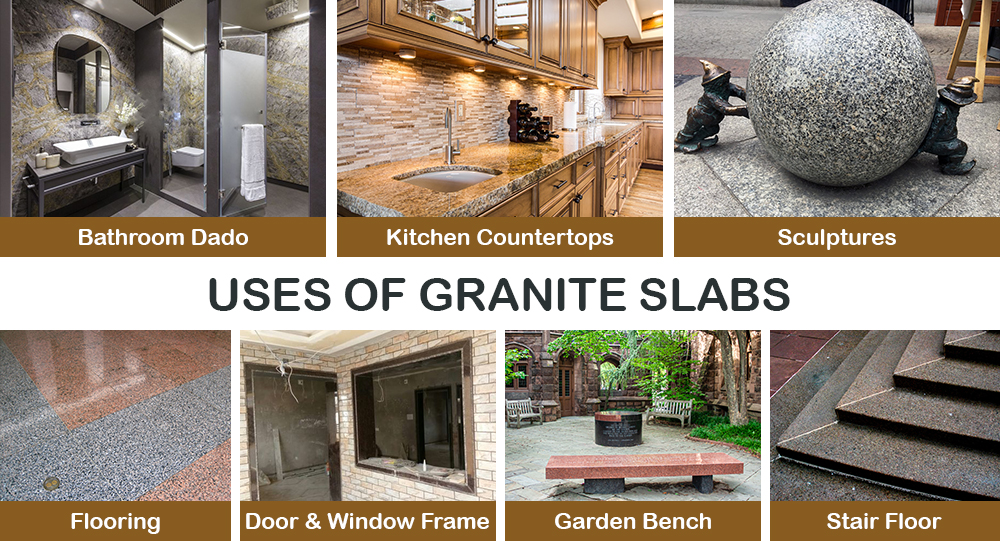
Granite slabs are used for room and , bathroom floors, and dado, as well as external cladding. Nowadays, they are popularly used in place of door-window frames as well as door-window sills and jambs. In general, slab of granite is best suited for kitchens that have a contemporary theme. It is also suitable for the making of countertops, tabletops, headstones, cremation urns, park benches, table, etc.
According to ‘Yan Li and Shuxia Ren ed.’[338] (Author of Book – Building Decorative Materials), natural granite, an advanced decorative building material, is primarily used in large public buildings or projects that need lavish interior and exterior decoration. The surface of the polished granite slab and rubbed granite slab is typically smooth and bright and has an outstanding texture, so this slab is generally used for the decoration of some structures’ internal walls and floors as well as external walls.
It can also be used to decorate surfaces of interior or exterior columns, dados, stairs, steps and sculptures etc, as well as bar counters, service counters, cash counters, furniture and showcases etc. The rough granite slab surface is boorish and rough, so it is mostly used in decorating external wall bases and wall as well as floor surfaces that establish the look of primitive simplicity and nature.
Furthermore, if you really want to learn more and dive deep about the usage of granite, click on the link and you will get all the uses of granite. –
The appearance quality and patterns of each natural granite slab in the same construction project should be exactly the same in order to ensure harmony and there should be no obvious dimensional deviation between slabs of the same size. However, due to variations in the nature of the material and the degree of manufacturing etc there may be some difference in the quality of its appearance, which may lead to imperfection in the decorative effect and constructional operation.
How is Granite Sealed?
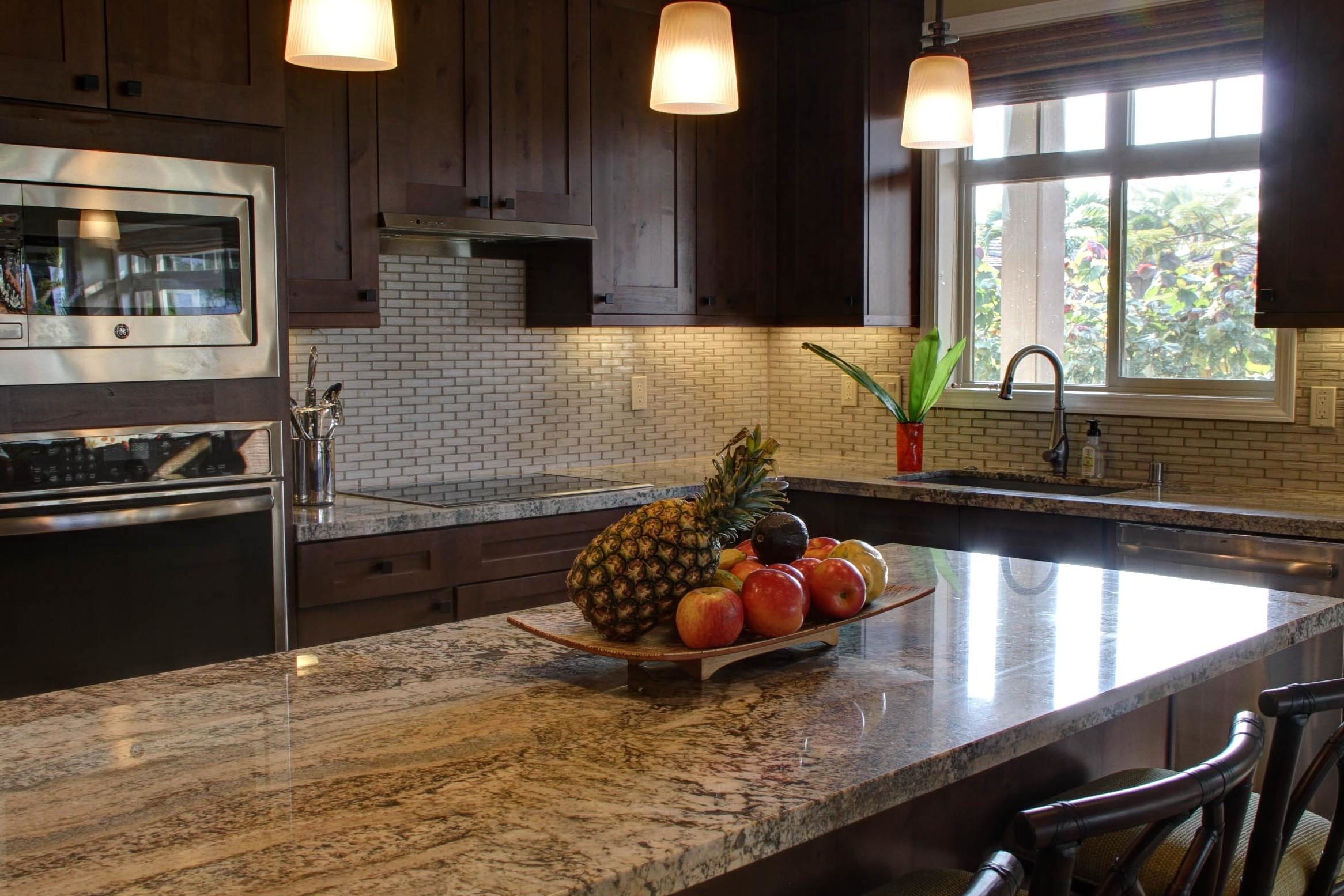
When granite slabs are installed, the large pieces of stone essentially cover the entire countertop area. If a single slab does not fully cover the countertop area, another piece can be added to extend it. There will be a seam at the place where the two pieces meet, which is filled with grout.
The high quality granite installers can make this seam look virtually invisible, but in some cases, it will be visible depending on the colour and design of the granite, i.e. if the colour of the granite is white and you are using grey cement for sealing, then it will look unpleasant. As it is a natural stone, they are bound to be bent and hence the edged corner at joints may not match perfectly. This does not just look bad, but can also cause someone to stumble and fall.
Besides the type of stone, colour and surface finish, you also need to know what size your slab is and how many stone pieces are required. When you choose your slab, you will want to know how many slabs you need and what thickness of slab to buy.
What is the Standard Size of Granite Slab?
An average granite slab sizes are about 1220 mm x 610 mm (4′x2′) to 2745 mm x 1220 mm (9′x4′). The thickness of granite is usually 18mm to 40 mm depending upon its length and breath. Each thickness offers a different look.
According to ‘Haimei Zhang’[205] (Author of Book – Building Materials in Civil Engineering), as per the processing demand of the design plans, the commonly used size of the coarse grinding slate and polished slate is: 300 mm × 300 mm, 305 mm × 305 mm, 400 mm × 400 mm, 600 mm × 300 mm, 600 mm × 600 mm, 610 mm × 305 mm, 610 mm × 610 mm, 900 mm × 600 mm, 915 mm × 610 mm, 1067 mm × 762 mm, 1070 mm × 750 mm, and the thickness is 20 mm.
What is the Cost of Granite Slab?
The cost of granite slabs approximately ranges from Rs. 50/sqft to Rs. 500/sqft.
How Do You Install a Granite Slab?
Installing a granite slab requires extreme precision and skilled workmanship. Those who install granite should have several years of experience. It can never be a DIY project for the home owner and not a task to be assigned to amateurs! It takes meticulous care, special tools and professional knowledge to install a slab of granite. Remember that costlier the material, the costlier would be its labour for installation, because if he/she spoils the material, your material wastage cost would be higher. It also needs special skills particularly when used for vertical cladding because of its heavyweight.
How Granite Slabs are Made?
The first step is to mine the raw granite block from the earth in order to make a granite slab. The mining companies mine and blast raw granites out of the quarry using powerful machines. The stone is in rough shape when it is mined out and hence it is sent to the workshops for making slabs. Milling machines are used to cut and polish the granite. The slab will be between 7 and 9 feet long once milling has been done. These slabs are usually what you see when you visit a granite showroom.
Are Granite Slabs Good?
Granite paving slabs are ideal for adding a high-end finish to your home and also provide plenty of styles. It’s a durable, long-lasting stone with a lightly flamed surface texture. This paving option requires little maintenance but will look great throughout the year.
Every material has benefits and drawbacks. As a result, it’s best to know about it before deciding. So let’s look at the advantages and disadvantages of granite slabs.
Advantages of Granite Slab:
- Its longevity and strength are among the distinguishing features of granite stones.
- These stones are also extremely erosion resistant and can be used as floor covering.
- This stone can endure extreme weather conditions due to its high toughness.
- Granite stone has a very elegant look, which is why it is used for facade and floor covering.
- This igneous stones have high impact resistance and it cannot be broken easily.
Disadvantages of Granite Slab:
- Cost of the granite and its installation cost are higher, when compared to other products. This is one of the biggest challenges.
- Long stone mortaring process and long time- needed for consuming mortar adhesion, makes the speed of implementing granite poor.
- According to ‘Yan Li and Shuxia Ren ed.’[338] (Author of – Building Decorative Materials), natural stone radioactivity is a big issue that people are widely concerned about. Most natural stones contain a small amount of radioactive content, which normally does some harm to human health. However, there are some granite items whose index of radioactive substances exceeds the stated level and which are environmentally polluting during long-term service, and hence they have to be controlled during use.
What are the Characteristics of the Granite Slab?
Granite is the typical type of plutonic rock. It consists of quartz, feldspar, a few dark—colored mineral, mica, sand etc. The prime chemical propositions of the granite are SiO2 (65% ~ 70%), small quantities of Al2O3, CaO, MgO and Fe2O3.
The characteristics of the granite are as following:
01. High decorative quality. The colour of granite is primarily determined by the outlay of the dark mica and the colour of syenite quartz sand and dark colored mineral. Typically, the granite is flesh red, brown, grey and red. After polishing, it looks beautiful due to spotted grains and different colors.
02. Granite has intense hardness and high abrasive resistance.
03. Good durability. The porosity of granite and water absorption are less and it is also highly weather-resistant.
04. Good acid resistance and erosion resistance. The primary chemical composition of granite is SiO2, hence it is acid-resistant.
05. Poor fire resistance. The quartz in the granite will have crystalline transition in 573 °C and cubical dilatation in 870 °C; hence the granite will break when fire mishaps take place. According to the surface processing mode, the granite can be classified in the following four types:
01. Chip-axe Slat – The surface of this type of granite is coarse, and has regular axe grains.
02. Machine Planned Slate – The relative flat surface of this type of granite is made by the planning machine, and the surface appears as parallel planned grain.
03. Coarse Grinding Slate – After coarse grinding, the surface of this type of granite is lubricous, but not glossy.
04. Polished Slate – After polishing, the surface of this granite is bright in color and the crystals are exposed. After planning, the polished slate can become like mirror surface.
FAQS:
01. Which Is Better Quartz or Granite?
Granite and quartz are the best materials that can increase real estate value. From the surface point of view, quartz is better as it is easy to maintain, longer-lasting, more environmentally friendly and easy to customize.
On the other hand, the uniqueness of granite remains appealing to many, and quartz can be expensive depending on your options. So before making a decision, think about your budget and your specific needs.
02. Can You Put Hot Pans on Granite?
Granite is quite heat resistant, so yes, you don’t have to worry about their countertops during regular use. For example, placing a hot pan on a well-maintained granite slab will not damage it. Remember that repeatedly placing a very hot pan on the same spot may cause granite to discolor, however, it would totally depend upon the granite slab.
Take away
As far as quality is concerned, one needs to check its flatness, dimension error, angular deviation, and the glossiness and beauty defects in the polished slate.
Granite slabs belong to the high standard architectural building materials. In history, it is mainly used to decorate foundation bed, the external floor face, flight of stairs, monument, gravestone, nameplate eaves etc. In modern city constructions, the mirror granite is mainly used in the external wall face, floor face, stair-steps etc. Granite is one of the most durable building materials available. It has become material of choice for today’s homes because of its aesthetic, sale value and its elegance.
After knowing everything about what is granite slabs, if you are choosing them for your home, read these Gharpedia tips before you buy – Best Tips to Buy Granite Slabs for Kitchen Countertops, Also know – How to Check the Granite Quality?
Image Courtesy: Image 3(c), Image 3(d), Image 3(f)

























